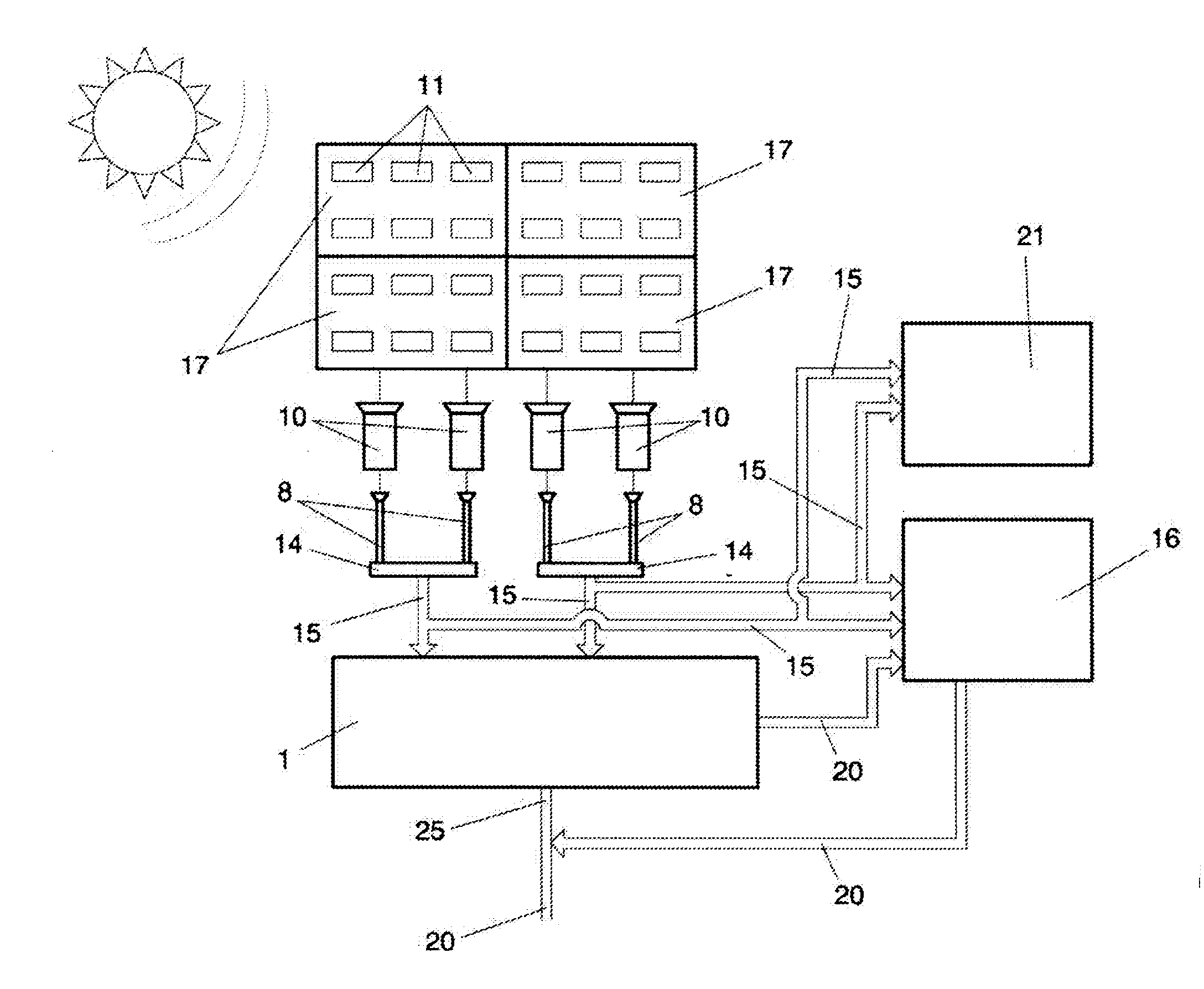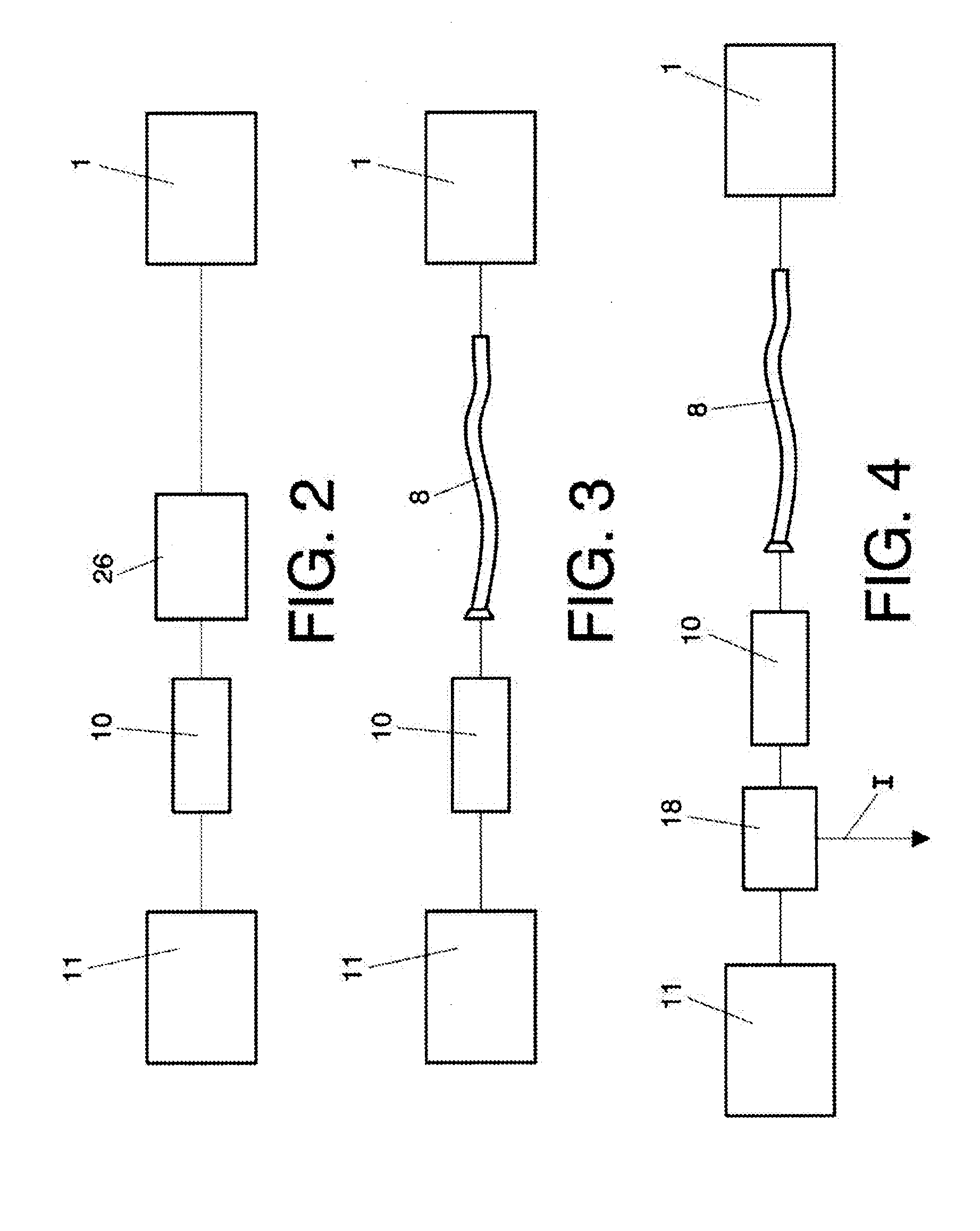Solar plant
a solar energy and plant technology, applied in semiconductor lasers, lighting and heating equipment, instruments, etc., can solve the problems of solar energy posing, loss of excess energy transported by photons, and loss of heat energy
- Summary
- Abstract
- Description
- Claims
- Application Information
AI Technical Summary
Benefits of technology
Problems solved by technology
Method used
Image
Examples
Embodiment Construction
[0033]This invention solves the technical problem posed through a solar plant that allows for maximised exploitation of solar radiation. The solar plant of the invention comprises the following elements:[0034]At least one solar collector equipped with a concentrator, said solar collector adapted to collect solar radiation and concentrate that solar radiation in the concentrator;[0035]At least one solar laser device, as a solar converter, where the laser device is adapted to receive (directly or indirectly) concentrated radiation from the concentrators in the collectors and transform said concentrated radiation into laser radiation, and[0036]A receiver adapted to receive radiation from the laser and transform it into thermal energy (heating a heat transfer fluid) or directly into electricity using the photoelectric effect; and / or a solar reactor adapted to obtain solar fuel, for instance hydrogen directly from water at temperatures up to 2000° C. by use of third substances (zinc or o...
PUM
 Login to View More
Login to View More Abstract
Description
Claims
Application Information
 Login to View More
Login to View More - R&D
- Intellectual Property
- Life Sciences
- Materials
- Tech Scout
- Unparalleled Data Quality
- Higher Quality Content
- 60% Fewer Hallucinations
Browse by: Latest US Patents, China's latest patents, Technical Efficacy Thesaurus, Application Domain, Technology Topic, Popular Technical Reports.
© 2025 PatSnap. All rights reserved.Legal|Privacy policy|Modern Slavery Act Transparency Statement|Sitemap|About US| Contact US: help@patsnap.com



